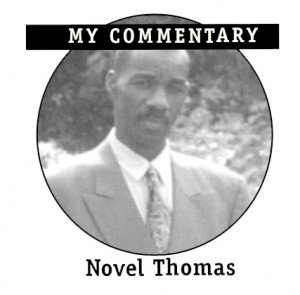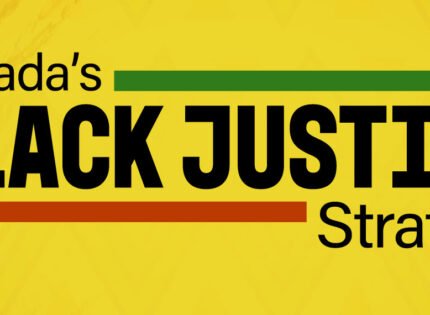In a world where [some] Europeans think we do not belong… it’s always about Black people standing our ground and staking out our rightful place.
Contrast what many described as the “White torchlight march” the night of Friday, August 11, in Charlottesville, Virginia, and the candlelight vigil the night of Wednesday, August 16, to celebrate the life of Heather Heyer, the young white woman killed by a younger, enraged white supremacist named James Fields.
Both were representing forces of good and evil, Heyer for justice and human rights, Fields for white power and racial superiority. But he took it a radical step further by using his car as a weapon, mowing down several people demonstrating on the right side of hate, killing Heather.
Domestic terrorism? Yes. Hate crime? Yes.
Such is the equation in the historical (and current) socio-political environment of intolerance and hate in America. And by the way, people must be accepted — and embraced – not tolerated.
So decide if you can the “moral equivalence” Führer Donald Trump (and by extension his ideologists) espoused in two press conferences in the wake of the Charlottesville incident. The first one was deplorable, so he was compelled a couple days later [by his handlers] to renounce… clarify his previous utterance on the incident.
A moot point; his detractors knew that deep in his belly and psyche he initially spoke from the heart to his constituency of xenophobes, racists and other forms of despicable… The second time he simply sanitized his sentiments.
Words spoken without emotion are one thing, and evident; those spoken with sincerity are another, and easy on the ears and mind. Both are palpable. Either way, the Führer’s words – unscripted or otherwise – were, in a grotesque way, genuine, from the heart, reflective of his ethos.
So, watching his proponents of hate parading with their torches and spitting hatred as they made their way to the University of Virginia that Friday night, seemingly with the tacit blessing of their leader, one could discern their emboldened, empowered attitude vis-à-vis America’s oft-touted conversation about slavery and racism again erupted when James Fields ran his car into the anti-racist protestors at the “white-supremacist rally…” They had gathered to protest plans to remove another statue, of Confederate Gen. Robert E. Lee, an historic racist icon, but a hero to some, like the Führer.
The coming to a head of the adversaries that day, and the outcome, was inevitable and predictable.
“She died doing what was right,” according to one headline.
“Very sad that our country continues to see this hatred and that a young life was lost as a result,” one gentleman commented.
In attempting to restore some semblance of unity the Führer criticized the violence and called for a return to law and order, one of his main campaign objectives.
Wonder what he would’ve said if he were president when 21-year-old white supremacist and Confederate acolyte Dylann Storm Roof walked into the Emanuel African Methodist Episcopal Church in Charleston, South Carolina on June 17, 2015 and shot nine church members to death during their Bible study prayer meeting.
“I have no choice,” Roof is alleged to have written in a manifesto of hate. “I am not in the position to, alone, go into the ghetto and fight. I chose Charleston because it is the most historic city in my state, and at one time had the highest ratio of blacks to Whites in the country. We have no skinheads, no real KKK, no one doing anything but talking on the Internet. Well someone has to have the bravery to take it to the real world, and I guess that has to be me.”
Such is the kind of hatred Black people have been up against
Post-slavery and now into the Trumpian era (the sentiments extend into Canada, where northern racists have seemingly been inspired by the ‘orange-haloed’ leader.
Racism has no borders; this online extract is apt confirmation. “[…] Confederate plaque on Montreal Hudson’s Bay store removed from flagship store in downtown Montreal that commemorates Jefferson Davis, president of the Confederate States from 1861 to 1865…”
Which is why the beginning of last week when the maelstrom of Confederate discourse erupted in the media (which includes ample Neo-Nazis and white supremacist rhetoric), Montreal historian Dr. Dorothy Williams, whose expertise is Black Canadian History, laid it out succinctly in an 88.5 CBC radio interview. She was invited to comment on Charlottesville.
Ms. Williams effortlessly connected the historical threads of slavery (the ‘chattelization’ of Black people and its continuing racist and social ramifications) that still bind America and Canada.
According to her the aforementioned Jefferson Davis, who was bullish on slavery industry, spent much time on this side of the border, probably enjoying the financial and other benefits of the dehumanizing system.
“Davis defended slavery…” according to one headline.
Full disclosure, until the Dr. Dorothy Williams interview, I never heard of Jefferson Davis, and you probably never did either. Actually, maybe because of his life’s work I mentally blanked him.
But as many times as I’ve walked into Morgan’s, Hudson Bay Company, the Bay… I have noticed, but never read in detail the inscriptions on any of the plaques dedicated to the European faces, perhaps even that of the once lauded, now disappeared Jefferson Davis.
Reflecting on that period of Black… African history, not just in North America, but wherever slavery was in effect, masters of the industry (and the centuries-old legacy: racism, discrimination, social marginalization…) never imagined that one day – despite multiple generations of unspeakable suffering – Black people would overcome. And that with the help of good people of conscience the inhumane business would collapse.
I’ve read of Canada’s relationship with slavery, but the incident in Charlottesville, and others elsewhere, have again illuminated the subject of Canada’s role.
So with elapsed time, wrongs are being righted, generations of Black scholars likes of Dr. Dorothy Williams are coming to the fore, unearthing and delving into our rich, but stolen… obfuscated historic presence. They are researching, re-writing and telling the truths of our being to those who are interested in listening and learning. And as we’re witnessing today, generations of people of all backgrounds are standing shoulder-to-shoulder in recurring anti-racism protests… mêlées across North America to help eradicate the institutionalized remnants and symbols of slavery and its deleterious social effects.
What Dr. Dorothy Williams did that morning on CBC was elucidate Canadians on this country’s blemished history (of slavery) and its institutionalized legacy: systemic racism, discrimination – not only towards people of colour (the proverbial minorities), but also, and especially, Canada’s Indigenous peoples.
So when the forces of good and evil came together in Charlottesville, it was another reminder that an aspect of America’s history [of racism] upon which the country was built, is not just living, it’s thriving… sustained by a racist constituency with an embedded ideology and ethos with tangible vestiges (flags, statues, monuments, busts, plaques…) of a dubious bygone era. And the descendants of that inglorious past of racial hatred are seemingly prepared to go to war to preserve it – white power and everything it represents.
Then there are those who, for obvious reasons, would rather see everything representing that period disappeared.
Call it serendipitous. The Charlottesville, Virginia, incident and its repercussions across America and Canada is a veritable teachable moment for many…















